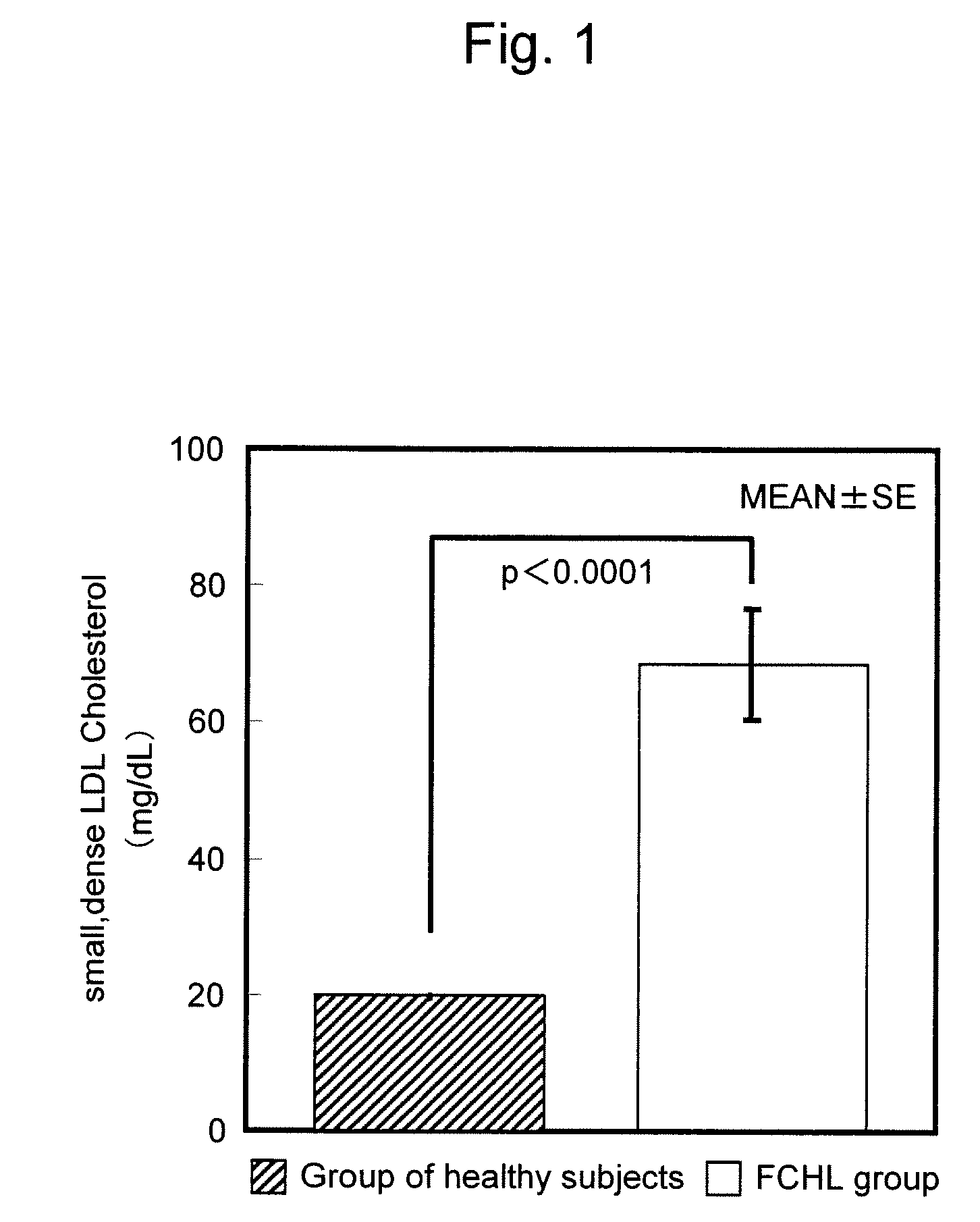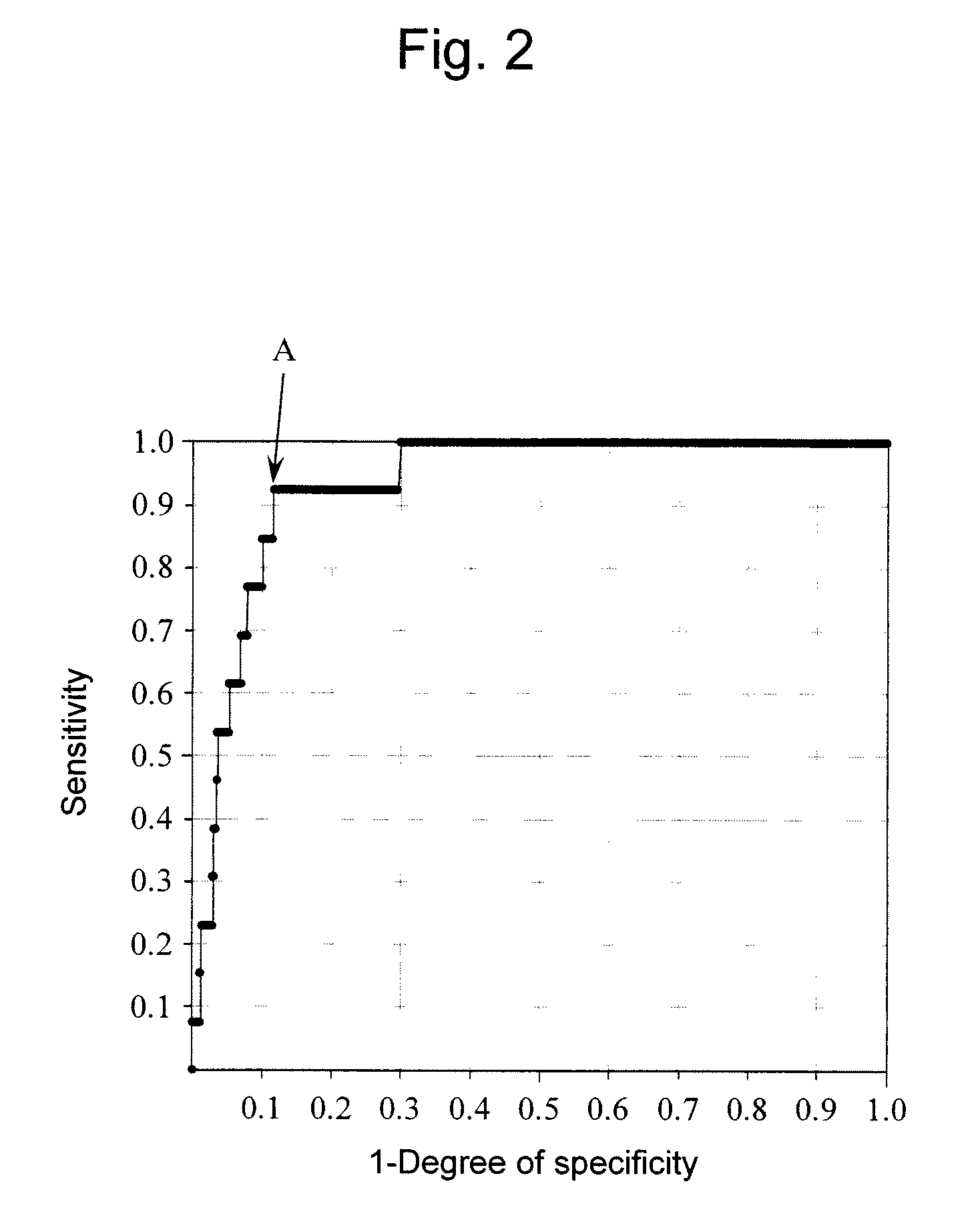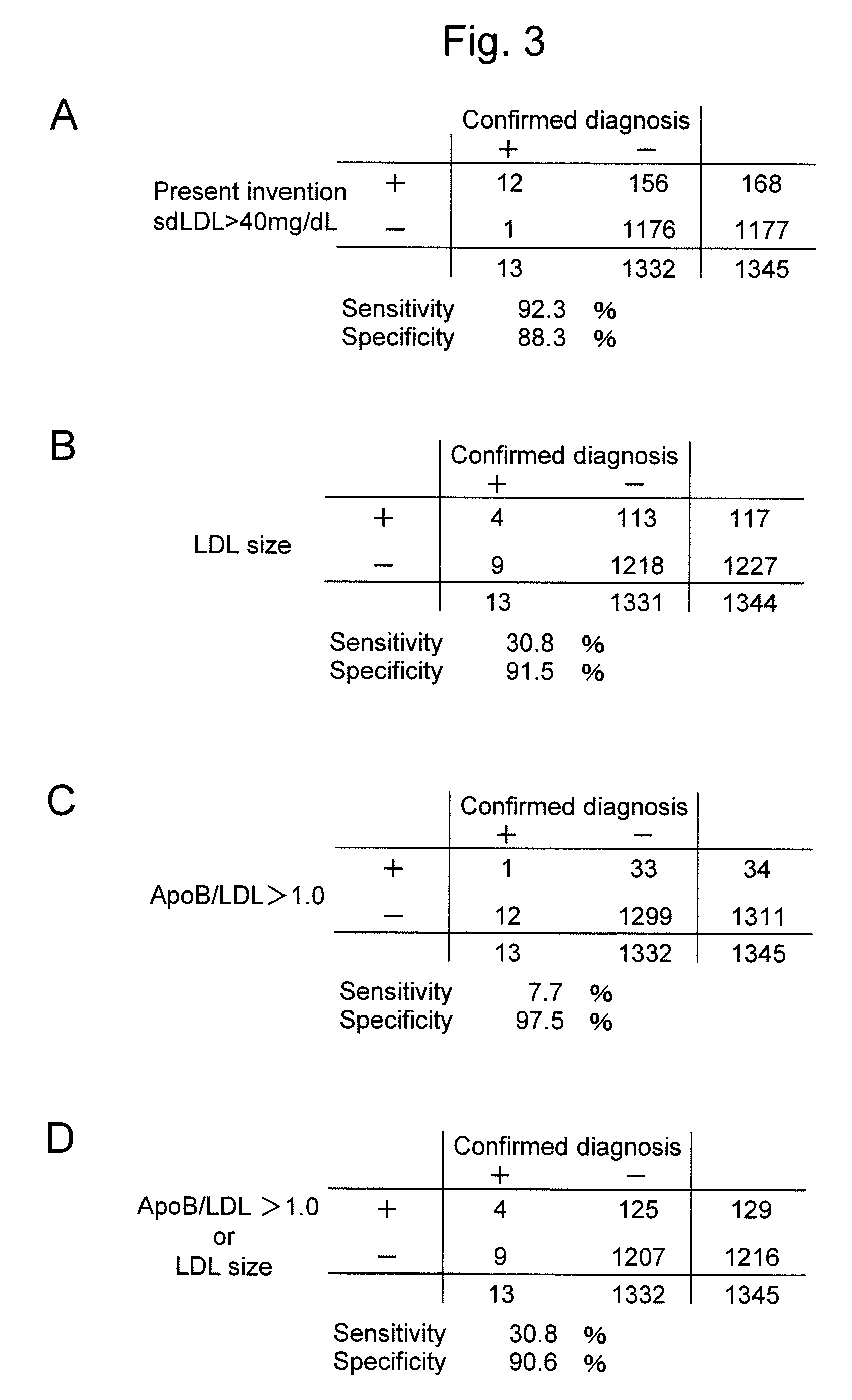Method for detection of familial combined hyperlipidemia
a combined hyperlipidemia and detection method technology, applied in biochemistry equipment and processes, instruments, withdrawing sample devices, etc., can solve the problems of burdensome time and expense for ldl cholesterol, measurement of ldl size by conventional electrophoresis or calculation,
- Summary
- Abstract
- Description
- Claims
- Application Information
AI Technical Summary
Benefits of technology
Problems solved by technology
Method used
Image
Examples
example 1
[0041]Three hundred and sixty (360) male and female healthy normal subjects who had not developed arteriosclerotic disease and 9 subjects who had been confirmed to be affected with FCHL by examination of subjects or based on the family history were subjected to the measurement of small, dense LDL cholesterol. For measurement of small, dense LDL cholesterol, sdLDL-C “Seiken” (produced by Denka Seiken Co., Ltd.) was used.
[0042]FIG. 1 shows the result. As shown in FIG. 1, the small, dense LDL cholesterol level was clearly found to increase in the FCHL group compared with that in the healthy normal group. This result demonstrates that FCHL disease can be detected satisfactorily by quantification of small, dense LDL cholesterol.
example 2
[0043]Various lipid parameters in samples obtained from the FCHL patient group used in Example 1 were compared. Reagents similar to those used in Example 1 were used for measurement of small, dense LDL cholesterol. Triglyceride, LDL-cholesterol, and HDL-cholesterol were measured by an enzyme method.
[0044]Table 1 shows the results. A subject is generally diagnosed to be affected with an arteriosclerotic disease if the level of lipid marker TG or LDL-C in a sample other than samples obtained from FCHL patients is high. As shown in Table 1, the levels of TG or LDL-C were found to be low in some samples obtained from FCHL patients. Small, dense LDL cholesterol levels were high in all cases. This indicates that small, dense LDL cholesterol can be a measurement marker for diagnosis of FCHL, which has superior specificity to those of conventional lipid markers.
[0045]
TABLE 1GenderAgeTGLDL-CHDL-CsdLDL-C1M3825025033117.42M406451033170.93M466571054355.54M541351755046.85M551334855449.86M6311568...
example 3
[0046]Healthy normal subjects (1345 cases) without diabetes and coronary artery disease were subjected to small, dense LDL cholesterol measurement using sdLDL-C “Seiken” (produced by Denka Seiken Co., Ltd.).
[0047]Samples were specified and grouped if they were derived from FCHL patients or non-FCHL subjects based on family history (a factor for definition of FCHL) and their hyperlipidemia. Sensitivity and specificity were measured when the cut-off value of sdLDL-C was varied and then a receiver operating characteristic (ROC) curve was produced (FIG. 2).
[0048]As a result, when sdLDL-C on the upper left (point A) on the ROC curve was 40 mg / dL, the sensitivity was 92.3% and the specificity was 88.3%. This value with extremely high sensitivity and specificity was tentatively determined to be a cut-off value.
PUM
| Property | Measurement | Unit |
|---|---|---|
| concentration | aaaaa | aaaaa |
| diameter | aaaaa | aaaaa |
| diameter | aaaaa | aaaaa |
Abstract
Description
Claims
Application Information
 Login to View More
Login to View More - R&D
- Intellectual Property
- Life Sciences
- Materials
- Tech Scout
- Unparalleled Data Quality
- Higher Quality Content
- 60% Fewer Hallucinations
Browse by: Latest US Patents, China's latest patents, Technical Efficacy Thesaurus, Application Domain, Technology Topic, Popular Technical Reports.
© 2025 PatSnap. All rights reserved.Legal|Privacy policy|Modern Slavery Act Transparency Statement|Sitemap|About US| Contact US: help@patsnap.com



